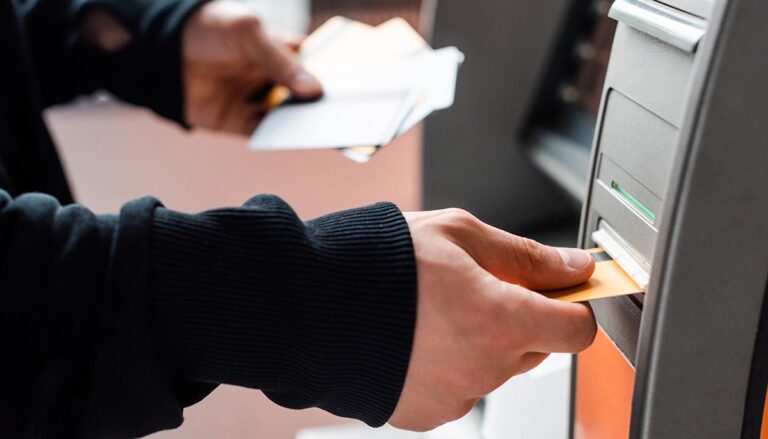There are three new street-level crime trends you need to be aware of. These are old scams with new twists and terms, such as “jugging,” “tap and glue,” and “sliders.” Being savvy to these tricks can save you from financial loss.
#1. ATM and banking: Look out for “jugging”
“Jugging” is a new term to describe a follow-home type of crime, specifically thieves who watch and follow people home after witnessing their target make a cash withdrawal from a financial institution, i.e., a bank or an ATM. The technique has spread to several states.
The thieves wait until the person is at home, in a more secluded setting, where they hope it will be easier to rob them of their money, ESPN reports.
The most consistently targeted are women and the elderly, but no one can be ruled out.
How to protect yourself from “jugging”
1. Be aware of your surroundings and those around you when you are in a bank lobby or at an ATM.
2. To help your situational awareness and eliminate distractions, avoid wearing headphones, earbuds, or using your phone.
3. As soon as you get into your vehicle, lock your doors and roll up your windows. Never leave money in your car.
4. When you leave a financial institution, pay attention to any vehicles that may be following you. If someone is following you for any length of time, drive to the nearest police or fire station, or call 911.
5. If you plan to make a large cash withdrawal, speak to management about having someone assist you to your car.
2. ATM or card reader crime: “tap and glue”
In the wake of the pandemic, more bank and credit cards have added the “tap” feature that allows you to tap rather than insert your card and avoid having to physically touch a terminal or enter a passcode (PIN #), according to Safe America.
However, there is a downside to this convenience, and thieves have been only too quick to exploit it. This scam works anywhere there is a card reader. Victims are finding their bank accounts drained of additional withdrawals they didn’t make.
How the scam works and how to protect yourself:
A. The thieves fill the ATM card slot with glue so that a card cannot be inserted. The next person who comes along is frustrated as they cannot use their card.
B. A knowledgeable bystander (criminal) is standing behind the victim and offers a suggestion that they use the “tap” feature of the card to be able to access their account.
C. The victim follows the suggestion and accesses their account.
D. Unknown to the victim, when using the tap feature at an ATM, you must choose to “end” or “close” the transaction to turn the “tap” feature off. If you don’t, it remains open for a short time–long enough for two to three additional withdrawals after you walk away, 10 TV reports.
3. “Sliders”:
In the crime committed by a “slider,” the most frequently targeted are distracted women. This is especially common at gas stations, and typically those using an outside aisle pump are at the greatest risk, Yahoo News reported.
The scam works like this, usually performed by teams:
A). A woman pulls up to the gas pump, often with her credit card out of her wallet, and her purse is on the passenger seat. Thieves watch to see if she didn’t hit the lock button, which leaves her passenger door unlocked. When the woman has her back to the vehicle, looking at the gas pump, they strike.
B). A getaway car pulls up alongside the victim’s unlocked vehicle, while a passenger exits and “slides” to the victim’s passenger side door to grab the purse, often gone before the victim even knows what has happened.
C). Sometimes, a thief will actually steal the victim’s vehicle, but most of the time, they simply snatch belongings.
In another variation, a thief throws a fake wallet on the ground, asking the victim if it belongs to them as a way of distracting the victim while the “slider” steals their belongings or vehicle.





